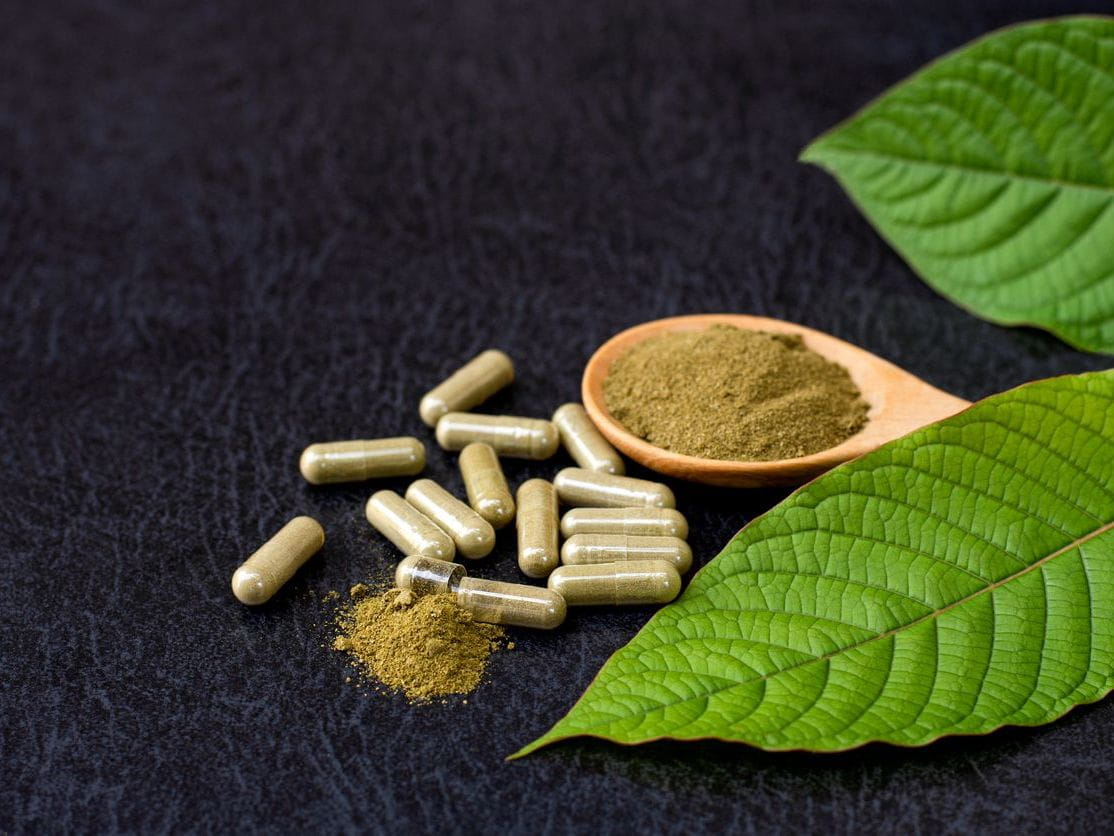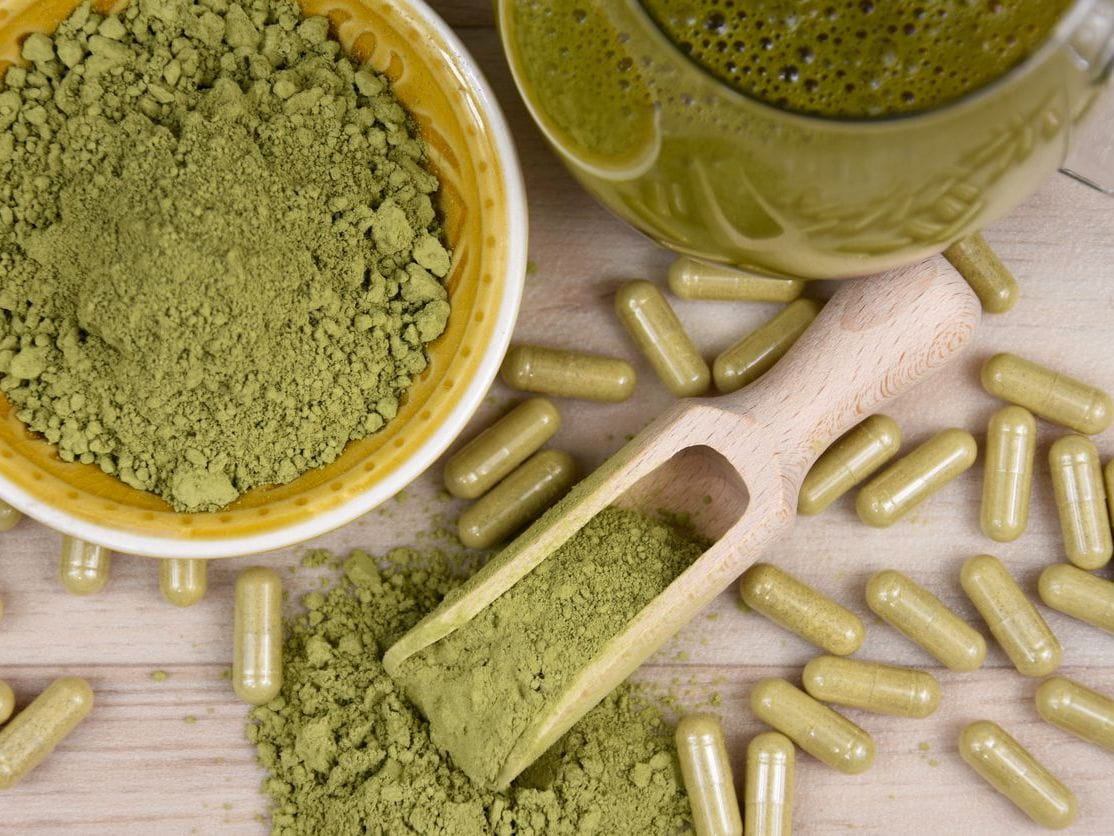What is Kratom?

The Bottom Line
Kratom is an herbal substance with stimulant- and opioid-like properties. Although not FDA-approved, it is present in many products. It has been used to treat a variety of conditions, including pain and fatigue. Kratom is also used to get high, as an alternative to typical opioids, and for opioid withdrawal. It can cause serious adverse effects both in overdose and routine use.

What is kratom? Is it an opioid?
Kratom refers to a compound found in the Mitragyna speciosa tree, which originates in Southeast Asia. It has been used for hundreds of years in Southeast Asia as an herbal remedy for a variety of conditions including pain, fatigue, and psychiatric disorders. It produces both stimulant- and opioid-like effects in the brain. However, while kratom acts on opioid receptors in a similar manner to traditional opioids (e.g., fentanyl, heroin), it is not nearly as potent.What does kratom do?
Kratom can produce several different effects on the body, depending on the amount taken. Its stimulant effects are more prominent at lower doses, while higher doses produce more of an opioid-like effect. Products are not standardized so it is difficult to know the actual dose received if a person is taking kratom. Stimulant effects can include increased alertness, jitteriness, and elevated heart rate and blood pressure. At higher doses, it might result in drowsiness, feelings of relaxation, and pain relief. For people who are dependent on opioids, kratom can alleviate symptoms of withdrawal.Is kratom addictive?
While kratom is not well-studied, experts know it works in parts of the brain involved in the development of addiction. There are also several individual factors that determine if a person will become addicted to kratom, including the amount, frequency, and duration of use, as well as a genetic predisposition to addiction. People who regularly use kratom and abruptly stop can develop withdrawal symptoms. However, kratom withdrawal is less severe than withdrawal from other opioid agents.How long does kratom stay in your system?
The effects of kratom can last for several hours. Generally, the higher the dose, the longer the effects will last. Kratom does not show up on most routine drug screenings.Is kratom safe?
While kratom products are not illegal, they are also not regulated by the FDA. Consumers therefore do not know how much kratom is present in a product, or if there are additional ingredients or contaminants. Kratom products have been found to be contaminated with lead, while one multi-state outbreak of Salmonella infections has also been linked to kratom products.We have little information about drug-drug interactions with kratom. Poison Control can help you check for known interactions. Be sure to tell us all of your prescription and over-the-counter medications, as well as any herbal supplements you may be taking. Kratom has been reported to produce mild side effects, including nausea, vomiting, constipation, jitteriness, dizziness, and drowsiness. It is not as strong as typical opioids such as fentanyl or heroin.
Can you overdose on kratom?
With higher doses and overdoses of kratom, more severe effects have been reported, including seizures, coma, high blood pressure, abnormal heartbeat, and liver problems. While some deaths have been linked to kratom use, most of these cases have been associated with the use of multiple drugs.What should you do if someone overdoses on kratom?
If someone overdoses on kratom, seek medical attention or call 911. If the person is not breathing, administer bystander naloxone. If the person has a seizure, you can place them in a safe position on their side until help arrives. If someone is taking kratom and develops concerning side effects that are not life threatening, or you need more information, call the Poison Center for help.If you have a question about kratom, help from experts is available by phone at 1-800-222-1222. Poison Control’s expert guidance is always free, confidential, and available 24 hours a day.
Medical Toxicologist
Poison Control Media Information
Did you find this page helpful? If so, we need your support. Poison Control is in constant competition with misinformation online. Links to www.poison.org or our webPOISONCONTROL triage tool from other websites and blogs help internet searchers quickly find accurate information and Poison Control’s contact information in an emergency. If you use the content from this page, please provide attribution via a link back to this page, www.poison.org, or https://triage.webpoisoncontrol.org/#!/exclusions. By doing so, you could save a life. Thank you!
Poisoned?
Call 1-800-222-1222 or
Prevention Tips
- Talk to your doctor or pharmacist before starting any new supplements.
- Store all medications and supplements up and out of the way of children.
- Bystander naloxone administration saves lives. Learn how to administer naloxone and keep it handy if possible.
- There are safe and effective treatments for opioid addiction. Treatment for opioid dependence is the best way to prevent an overdose.
This Really Happened
Case 1: A 17-year-old girl took 2 tablespoons of kratom powder to get high after reading about it online. One hour later, she experienced nausea, vomiting, abdominal pain, and dizziness. She went to the emergency department where she was treated with intravenous fluids and medications for nausea. Her symptoms resolved and she was discharged after 6 hours.Case 2: A 45-year-old woman was found unresponsive in her home by a family member after using kratom. Emergency medical services were called and found the patient in cardiac arrest. CPR was performed and the patient’s pulse returned, but she was comatose. When she arrived at the emergency department, she was placed on a ventilator and had an abnormal EKG. She spent a few days in the intensive care unit but remained comatose. She was declared brain dead and went on to become an organ donor.
Case 3: A 43-year-old man presented to the emergency department feeling jittery with abdominal cramping and trouble sleeping. He had been using kratom regularly to get off opioids, but recently stopped. He was given medications to help with his withdrawal symptoms and was discharged to an outpatient rehabilitation program.
For More Information
Multistate Outbreak of Salmonella Infections Linked to Kratom | CDC
References
Poisoned?
Call 1-800-222-1222 or
Prevention Tips
- Talk to your doctor or pharmacist before starting any new supplements.
- Store all medications and supplements up and out of the way of children.
- Bystander naloxone administration saves lives. Learn how to administer naloxone and keep it handy if possible.
- There are safe and effective treatments for opioid addiction. Treatment for opioid dependence is the best way to prevent an overdose.
This Really Happened
Case 1: A 17-year-old girl took 2 tablespoons of kratom powder to get high after reading about it online. One hour later, she experienced nausea, vomiting, abdominal pain, and dizziness. She went to the emergency department where she was treated with intravenous fluids and medications for nausea. Her symptoms resolved and she was discharged after 6 hours.Case 2: A 45-year-old woman was found unresponsive in her home by a family member after using kratom. Emergency medical services were called and found the patient in cardiac arrest. CPR was performed and the patient’s pulse returned, but she was comatose. When she arrived at the emergency department, she was placed on a ventilator and had an abnormal EKG. She spent a few days in the intensive care unit but remained comatose. She was declared brain dead and went on to become an organ donor.
Case 3: A 43-year-old man presented to the emergency department feeling jittery with abdominal cramping and trouble sleeping. He had been using kratom regularly to get off opioids, but recently stopped. He was given medications to help with his withdrawal symptoms and was discharged to an outpatient rehabilitation program.
